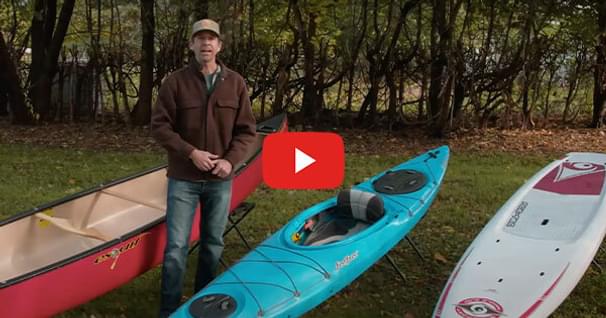Why You Need a Kayak With Bulkheads
Why You Need a Kayak With Bulkheads
When choosing a kayak, especially for touring or sea kayaking, one feature you may encounter frequently is bulkheads. But why should you care about them? Simply put, bulkheads are an essential safety and performance feature that can enhance your paddling experience in several ways.
What Are Bulkheads?

Bulkheads are watertight partitions inside a kayak that create separate compartments within the hull. Usually made of plastic or foam, they are positioned between the cockpit and the ends of the boat. Most sea and touring kayaks have bulkheads at both the front and rear, while some recreational models may have only one, typically at the rear.
Related: Understanding Kayak Bulkheads and Storage
Safety First: Flotation
The most important reason for having a kayak with bulkheads is safety. In the event of a capsize or swamping, the compartments created by bulkheads trap air, keeping the kayak buoyant. Without bulkheads, water can flood the entire hull, making it nearly impossible to stay afloat or maneuver. This built-in flotation can be life-saving in rough waters or on longer expeditions where getting back to shore isn’t a simple option.
A kayak without bulkheads will sink much lower in the water when flooded, and while inflatable or foam flotation bags can offer some buoyancy, they aren’t nearly as effective as bulkheads. If your kayak flips, having bulkheads makes it easier to right the boat and continue paddling, rather than struggling with a flooded vessel.
Easier Rescues

Bulkheads make self-rescue or assisted rescues far simpler. With water limited to the cockpit area, you'll have far less to bail out before getting back in. The watertight compartments ensure that your kayak won’t completely swamp, and with far less water to displace, re-entry becomes quicker and less tiring—an important factor if you’re already exhausted from a capsize.
Gear Storage and Organization

Beyond safety, bulkheads also provide watertight storage compartments. These dry storage areas are perfect for keeping your gear safe from the elements. Whether you’re packing camping equipment for an overnight trip or simply stashing lunch and extra clothes, bulkheads allow you to organize your gear and keep it dry. Without them, you would need to rely on dry bags floating loose inside your kayak, which can shift during your paddle, throwing off the boat’s balance.
Boat Structure and Performance
Bulkheads also contribute to the structural integrity of your kayak. By creating separate, reinforced sections within the hull, bulkheads add rigidity, which improves the overall performance of your boat. The compartments help distribute weight more evenly, which enhances stability and tracking. For paddlers who cover long distances or navigate rougher waters, this improved performance makes a big difference in handling.
Should You Paddle Without Bulkheads?
If you’re only paddling short distances on calm lakes or slow-moving rivers, you might be able to get away without bulkheads. Many entry-level recreational kayaks skip this feature to reduce costs and make the boats lighter. However, if you plan to paddle in deeper waters, venture farther from shore, or take multi-day trips, bulkheads are an invaluable feature that shouldn’t be overlooked.
What About Sit-On-Top Kayaks?

Sit-on-top kayaks are a popular choice for recreational paddlers due to their ease of use and stability. Unlike traditional sit-inside kayaks, they don't have an enclosed cockpit, so there are no internal bulkheads. Instead, sit-on-top kayaks rely on their inherent design for flotation and safety.
While sit-on-top kayaks don't have the traditional bulkhead compartments found in sit-inside models, they are designed with sealed hulls that provide built-in flotation. The entire body of the kayak is a sealed unit, meaning water cannot easily enter the hull. Additionally, most sit-on-top kayaks have scupper holes—small drainage holes in the seat and footwell areas. These allow water that splashes onto the deck to drain out naturally, so you don't need to worry about bailing water like you would in a sit-inside kayak.
Related: How to re-enter a sit-on-top kayak
Know Before You Buy
When selecting a kayak, safety and functionality should be top priorities. Bulkheads provide crucial flotation in case of a capsize, simplify rescue efforts, and offer secure storage for your gear. They also enhance your boat’s overall structure, giving you a smoother, more stable paddling experience. While some paddlers may not need bulkheads for casual outings, for anyone venturing into open water or planning longer expeditions, they are a feature worth investing in.
Related: Sit-on-top versus sit inside kayaks, which one is right for you?
Understanding the role bulkheads play in safety and performance will help you make an informed decision when purchasing your next kayak. After all, the best kayak is the one that keeps you safe and paddling with confidence.
Related Articles
Ken Whiting answers the big question for new paddlers - Do you go for a canoe, a kayak, or a stand up…
I find certain words in the English language capture my interest. Seaworthy is one of them. My brain…
This is Marshall Seddon, from The River Connection, a kayak specialty store and instructional center in…
In this video, we're going to look at the best way to re-enter a sit-inside kayak, in the event that…



